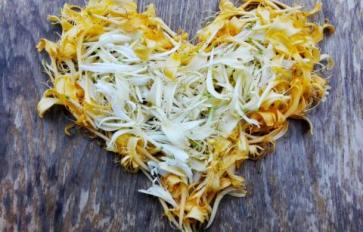For all those who wanted to have a fruit tree, but have no land to plant the seed in -- pot a bonsai instead…
Fruiting trees are marvelous creations of nature. They are rather attractive, come in all shapes and sizes, add to the oxygen content around, offer up delicious fruits and bloom into beautifully scented flowers that really add to a fragrant garden.
That said, not all of us are lucky enough to live in houses with a garden or backyard to fulfill our gardening dreams in. Take heart if you live in an apartment for as long as you have a sunny window, porch or even a balcony – you can plant a fruit tree, as a bonsai. The thing about bonsais is that they are not any specialized kind of cultivars that produce dwarf trees in pots – bonsais are a labor of love that can turn a seedling with the potential to grow into a full-sized tree into a miniature of the same. And the great thing is, caring for a bonsai is not as difficult or time-consuming as you might think…
How To Plant A Bonsai Fruit Tree
The first thing to do is to plant the seeds of the fruiting bonsai you are aiming for. Citrus, apples, edible berries such as mulberry or cherries as well as fig trees are good choices, as are mangoes, grapes and even pears or pomegranates – they will yield edible fruits. You can choose to buy a seedling or a sapling from the nursery, too, or plant your seed into a small pot. Here are the steps:
- Once the seedling is about 4-5 cms high and ready to be replanted – choose a good bonsai pot. An untreated ceramic pot or a wooden trough will work best for fruiting plants as they require a good filtration system. If your pot retains water and has spongy soil, your fruiting tree will not bloom.
- Make sure the pot has a wire mesh at the bottom to let the extra water seep out but keep the high-nutrient soil in. Use a wire to hold the mesh in place and add an additional wire to anchor the tree in place when it grows.
- Fill the pot with good bonsai soil – a mixture of peat compost, bark and other equally nutritive loamy and clay soil mixes. Make a hole in the center and carefully transplant the seedling in. If you find that the seedling’s tap root is too long, chop off a little but keep 30% of the root attached at all times.
- Make sure the roots are covered with the soil and then water the seedling a little.
- As the seedling grows branches, make sure to snip in a balanced way, slowly thickening the stem with just 2-3 main branches on the tree. Regular pruning will keep the bonsai strong and in mint condition to bear fruit.
- Remember to keep your bonsais in an airy corner that receives sunlight – be it indoor or outdoor and as is with other trees – protect it from pests, bugs and frost, depending on weather conditions.
- Fertilize once every month, but use just a little amount of fertilizer every time – remember to water regularly so that the soil remains moist but not spongy.
General Bonsai Caring Tips
- Water your bonsai regularly, the moment the top soil is dry – your little tree is parched.
- Remember to fertilize – while other trees have extensive root systems that can, well, go rooting for nutrients – your bonsai has to be spoon fed by you… They have to be fertilized all year round, but the NPK ratios will differ as per season. For spring, use an NPK 6:3:3 and for summer go equal with an NPK 5:5:5. For autumn, less of nitrogen is needed to harden the tree for winter so use an NPK 3:10:10. If you want your tree to flower, and consequentially fruit, use NPK 3:5:3 since more phosphorus is needed for a tree to bloom… Older bonsais will need less fertilizer and lesser nitrogen so 3:10:10 applied bi-monthly should work. Remember to fertilize regularly with frequent applications of little amounts.
- Re-pot your bonsai every two to five years – if your bonsai is not growing well despite the watering and fertilizing, gently nudge the plant along with the soil out of the pot. If the roots are circling the main root system, the bonsai has to be re-potted. To re-pot, nudge the soil off using a thin stick (try chopsticks!) and cut off any roots that are too long – at least 30% of the root mass should remain so be careful whilst you snip. Re-pot in another or even the same pot if you so wish, but remember to use bonsai soil as opposed to normal soil for the plant to really flourish in its tiny environs.
We wish you happy gardening and beautiful Bonsais – remember, a Bonsai tree can yield a full-sized fruit if well cared for!








